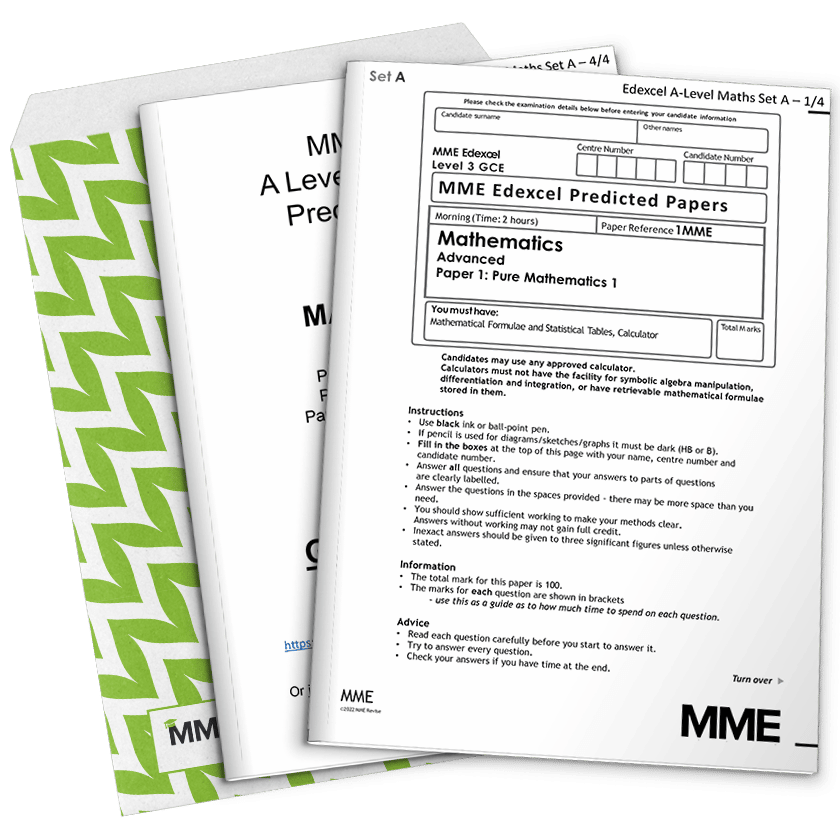Equations Involving Exponentials
Equations Involving Exponentials Revision
Equations Involving Exponentials
Equations involving exponentials and logarithms can become much more complicated than we have already seen. On this page, we will learn how to use a calculator for logarithms, attempt to solve some more difficult equations, and apply knowledge of logarithms to real life.
The following topics build on the content in this page.
Using a Calculator
Your calculator will have several buttons to do with logarithms.
\log_{\square}\square allows you to do any logarithm. Put the base in the lower box and the number in the box on the right.
\log_{10}\square is for logarithms with a base of 10 only.
\ln is the natural logarithm. We will see this later.
Example: If we want to do \log_{4}(81) on a calculator we would press \log_{\square}\square then 4 then 8 then 1 then =
Exponential Equations
Some exponential equations look more complicated, but they are really just quadratics in disguise.
They take the form ap^{2x}+bp^{x}+c=0
We solve them by substituting y=p^{x}, and noticing that y^{2}=p^{2x}
Then we have a simple quadratic: ay^{2}+by+c=0
This gives us two roots: y=r_{1} and y=r_{2}
Putting x back in gives p^{x}=r_{1} and p^{x}=r_{2}, which are two equations that we already know how to solve.
Example: 3\times6^{2x}-7\times6^{x}+2=0
3\times(6^{x})^{2}-7\times6^{x}+2=0
y=6^{x}
3y^{2}-7y-2=0
(3y-1)(y-2)=0
y=\dfrac{1}{3} or y=2
6^{x}=\dfrac{1}{3} or 6^{x}=2
x=\log_{6}\left(\dfrac{1}{3}\right) or x=\log_{6}(2)
x=-0.613 or x=0.387
Logarithm Equations
Difficult logarithm equations require you to use more than one law of logarithms.
Example: \log_{3}(21x-2)-2\log_{3}(x)=3
\log_{3}(21x-2)+\log_{3}(x^{-2})=3
\log_{3}((21x-2)x^{-2})=3
\log_{3}\left(\dfrac{21x-2}{x^{2}}\right)=3
\dfrac{21x-2}{x^{2}}=3^{3}
\dfrac{21x-2}{x^{2}}=27
21x-2=27x^{2}
27x^{2}-21x+2=0
(9x-1)(3x-2)=0
x=\dfrac{1}{9} and x=\dfrac{2}{3}
Real-Life Problems
Exponentials and logarithms appear frequently in real life. An important skill is being able to solve real world problems involving exponentials and logarithms.
Example: A car depreciates in value over the course of several years according to the function V=14000\times0.9^{T} where V is the value of the car and T is the time in years.
i) How much does the car cost new?
ii) Jon has owned his car for 9 years. How much is it worth?
iii) Clarissa buys a new car today. How many years until it is worth half of what she paid?
i) New is at T=0 so V=14000\times0.9^{0}=14000
ii) This is T=9 so V=14000\times0.9^{9}=5424
iii) She paid new cost which is 14000
Half of what she paid is 7000
7000=14000\times0.9^{T}
0.9^{T}=\dfrac{7000}{14000}
0.9^{T}=0.5
\begin{aligned}T&=\log_{0.9}(0.5)\\[1.2em]&=6.58\end{aligned}
Equations Involving Exponentials Example Questions
Question 1: Solve for x:
3^{2x}-28\times3^{x}+27=0[3 marks]
3^{2x}-28\times3^{x}+27=0
(3^{x})^{2}-28\times3^{x}+27=0
Make a substitution y=3^{x}
y^{2}-28y+27=0
(y-27)(y-1)=0
y=27 or y=1
Put our substitution back in:
3^{x}=27 or 3^{x}=1
x=\log_{3}(27) or x=\log_{3}(1)
x=3 or x=0
Question 2: Solve for x:
2\log_{2}(2x-1)-3\log_{2}(x)=4[5 marks]
2\log_{2}(2x-1)-3\log_{2}(x)=4
\log_{2}((2x-1)^{2})-\log_{2}(x^{3})=4
\log_{2}\left(\dfrac{(2x-1)^{2}}{x^{3}}\right)=4
\dfrac{(2x-1)^{2}}{x^{3}}=2^{4}
\dfrac{(2x-1)^{2}}{x^{3}}=16
(2x-1)^{2}=16x^{3}
4x^{2}-4x+1=16x^{3}
16x^{3}-4x^{2}+4x-1=0
(4x-1)(4x^{2}+1)=0
x=\dfrac{1}{4} is the only real solution.
Question 3: A particle’s radioactivity decreases according to R=1000\times0.8^{T} where R is radioactivity and T is time in years.
a) Find the half-life (when radioactivity has halved from the initial value) of the particle.
b) A safe level of radioactivity is 5. How long until the particle is safe?
[5 marks]
Find initial value, which is at T=0:
\begin{aligned}R&=1000\times0.8^{0}\\[1.2em]&=1000\times1\\[1.2em]&=1000\end{aligned}
Hence, half-life is when R=\dfrac{1000}{2}=500
500=1000\times0.8^{T}
\dfrac{500}{1000}=0.8^{T}
0.5=0.8^{T}
\begin{aligned}T&=\log_{0.8}(0.5)\\[1.2em]&=3.11\text{ years}\end{aligned}
R=5
5=1000\times0.8^{T}
\dfrac{5}{1000}=0.8^{T}
0.005=0.8^{T}
\begin{aligned}T&=\log_{0.8}(0.005)\\[1.2em]&=23.7\text{ years}\end{aligned}
You May Also Like...

MME Learning Portal
Online exams, practice questions and revision videos for every GCSE level 9-1 topic! No fees, no trial period, just totally free access to the UK’s best GCSE maths revision platform.






